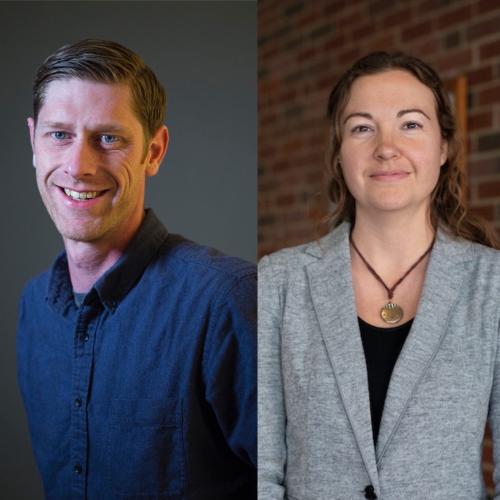
Website examines additional roles for-profit hospitals play in communities

Two Ohio University researchers have launched a new website that explores national data and case studies examining the services for-profit hospitals bring to their communities outside of direct medical care.
Cory Cronin, Ph.D., assistant professor in the College of Health Sciences and Professions, and Berkeley Franz, Ph.D., assistant professor in the Heritage College of Osteopathic Medicine, serve as co-principal investigators on a Robert Wood Johnson Foundation-funded project to study community engagement practices of for-profit hospitals in the U.S. The website, Anchoring Health, provides an inside look into ways for-profit hospitals are acting as anchor institutions in their communities, based on information from their research.
“For-profit hospitals aren’t required to report what they do to benefit the community like nonprofit organizations are asked to do; however, in no way does that mean that for-profit institutions, especially hospitals, aren’t providing purposeful benefits for the community,” Cronin said. “We’re interested in looking at the ways hospitals are working to keep people healthy year-round rather than just treat them when they’re sick, since this particular subject has rarely been studied.”
The researchers found that for-profit hospitals offer community services outside direct medical care in a variety of ways. In examining their case studies, the team was impressed by the creative ways hospitals disseminate information, especially in regard to population health. They found that many hospitals attract people to events aligned with their interests, including fashion shows for women and car shows for men.
“Men’s health has continued to be a big issue, since men are less likely to concern themselves with long-term health care and preventative care,” said Kelly Choyke, a Heritage College community health research assistant, who assists with the project. “By attracting men to these events, hospitals are getting them the necessary information they need to know for screenings and how to take control of their health.”
For-profit hospitals also offer wellness programs for children, as well as investments in both high school and college programs that support labs and scholarships.
“Hospitals’ contributions extend far beyond health-related things,” said Franz, who also holds the Heritage Career Development Faculty Endowed Fellowship in Population Health Science, Osteopathic Heritage Foundation Ralph S. Licklider, D.O., Research Endowment. “Anchor institutions do more than provide direct medical care. They also provide employment opportunities for people living near the hospitals, making sure unemployment rates are low within their community as well.”
The researchers found that many for-profit hospitals are located in vulnerable communities with poor health outcomes and high unemployment, so they are able to make an even bigger impact by engaging these communities.
When putting together the case studies, the researchers developed demographic profiles to see what the communities looked like and how these communities could benefit from hospital programming.
“What’s been really insightful while researching the case studies is just how hospitals adapt to their communities, creating different programs based on the needs of that particular community,” said Vanessa Rodriguez, another Heritage College community health research assistant on the project.
